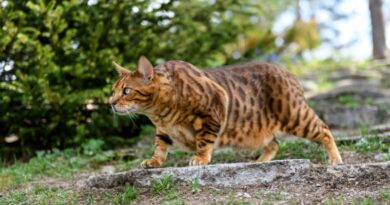Embark on a whimsical journey as we explore the fantasy world of potential pets that capture the hearts and imaginations of animal lovers. In “Ten Animals People Wish Were Pets But Aren’t,” we delve into the dreamy realm of unconventional companionship. From mythical creatures to exotic species, this blog uncovers the reasons behind our collective yearning for extraordinary animal companions. Whether it’s the charm of the surreal or the allure of the unknown, our desire to domesticate these creatures reflects our innate connection with the wild. Join us in this delightful exploration of unfulfilled pet fantasies, where reality and imagination intertwine to create a captivating tapestry of wishful companionship.
Table of Contents
ToggleTen Animals People Wish Were Pets But Aren’
Unicorn: A Mythical Marvel

The unicorn, often depicted as a horse with a single, spiraled horn on its forehead, has long been a symbol of purity and magic. Despite its mythical status, the desire for a real-life unicorn as a pet persists. Enthusiasts are captivated by the idea of a gentle, otherworldly companion with a radiant presence. However, the lack of scientific evidence supporting the existence of unicorns and their impracticality as domesticated animals makes them an unattainable dream. The allure lies in the fantastical nature of these creatures, fueling our collective imagination and yearning for the extraordinary.
Dragon: Creatures of Legend
Dragons, legendary creatures with powerful wings and fiery breath, have fascinated cultures worldwide for centuries. The desire to have a dragon as a pet is fueled by their majestic appearance and the potential for a deep, mythical bond. Despite the popularity of dragons in folklore and fantasy literature, the reality of owning a fire-breathing companion is, of course, implausible. The laws of physics and biology pose insurmountable challenges, relegating dragons to the realms of fiction. Nonetheless, the dream of sharing our lives with these awe-inspiring creatures persists, a testament to the enduring magic of dragon lore.
Also Read: Deadliest Snakes
Penguin: Charming Cold-Weather Companions

Penguins, with their distinctive waddle and adorable appearance, often capture the hearts of animal lovers. The dream of having a penguin as a pet stems from their charming antics and the endearing way they navigate both land and water. However, the impracticality of maintaining the specific cold environments essential for their well-being, coupled with legal and ethical considerations, makes penguins unsuitable as household pets. While documentaries and zoos offer glimpses into the fascinating lives of these birds, the dream of a personal penguin companion remains a distant, albeit charming, wish.
Owl: Guardians of the Night Sky
Owls, known for their enigmatic nocturnal presence and wise demeanor, are creatures of fascination. The desire to keep an owl as a pet often arises from their association with mysticism and wisdom. However, the reality of owl care presents challenges, as these birds have specialized needs, including a unique diet and nocturnal habits. Legal restrictions further complicate the prospect of having an owl as a pet, reinforcing the idea that these magnificent birds are best admired from a respectful distance. The dream of a feathered confidante, echoing the magic of Harry Potter’s Hedwig, persists despite these practical limitations.
Sloth: Leisurely Living

Sloths, with their unhurried and laid-back lifestyle, evoke a sense of tranquility that many find appealing. The desire for a sloth as a pet stems from their seemingly carefree existence and adorable, slow-motion movements. However, the complex dietary and environmental needs of sloths, combined with their protected status due to conservation concerns, make them unsuitable as household companions. While the charm of sloths continues to garner attention through social media and documentaries, the dream of having a leisurely, tree-dwelling friend remains firmly in the realm of fantasy.
Dolphin: Oceanic Dream Companions
Dolphins, known for their playful nature and high intelligence, are the dream companions of many marine enthusiasts. The desire to have a dolphin as a pet arises from the appeal of their acrobatic displays and seemingly friendly demeanor. However, the ethical and logistical challenges of maintaining the vast oceanic environments essential for their well-being make dolphins impractical as household pets. Legal restrictions on the captivity of marine mammals further emphasize the importance of preserving their natural habitats. While interactive dolphin encounters exist, the dream of a personal aquatic friend requires a deep understanding of marine ecosystems and a commitment to ethical wildlife appreciation.
Elephant: Majestic Giants

Elephants, with their majestic presence and remarkable intelligence, are creatures that inspire awe and admiration. The wish to have an elephant as a pet is fueled by their gentle nature and the potential for a profound human-animal bond. However, the immense size, specialized care requirements, and ethical considerations surrounding elephant captivity make them unsuitable as household pets. Conservation efforts emphasize the importance of protecting wild elephant populations and their natural habitats. While interactions with elephants in controlled environments exist, the dream of having a personal pachyderm companion necessitates a broader commitment to elephant welfare and environmental conservation.
Giraffe: Towering Elegance
Giraffes, with their long necks and graceful stature, embody a unique and elegant charm. The desire to have a giraffe as a pet often stems from their distinctive appearance and the whimsical idea of a towering companion. However, the impracticality of accommodating their massive size, specialized diet, and legal restrictions on exotic animal ownership make giraffes unattainable as household pets. Zoos and wildlife reserves provide opportunities to appreciate these majestic creatures responsibly, but the dream of a giraffe grazing in one’s backyard remains firmly within the realm of imagination.
Lion: Kings of the Wild
Lions, as majestic symbols of strength and royalty, captivate many with their regal presence. The desire to have a lion as a pet reflects the fascination with their wild beauty and the allure of a bond with the king of the jungle. Yet, the inherent dangers, ethical concerns, and legal restrictions associated with keeping large carnivores as pets make lions impractical for domestication. Conservation efforts focus on preserving wild lion populations, reinforcing the importance of appreciating these magnificent creatures from a distance rather than attempting to integrate them into household settings.
Also Read: Signs of Snakes Around the House
Gorilla: Intelligent Primate Companions

Gorillas, with their remarkable intelligence and close genetic ties to humans, evoke a sense of kinship and intrigue. The wish to have a gorilla as a pet is driven by the prospect of forming a deep connection with a highly intelligent primate. However, the ethical complexities, legal regulations, and the inherent challenges of meeting the social and environmental needs of gorillas make them unsuitable as household companions. Conservation efforts emphasize the preservation of gorilla habitats and the importance of observing these awe-inspiring creatures in controlled environments that prioritize their welfare and natural behaviors. The dream of having a gorilla as a companion underscores the profound connection humans feel with our closest animal relatives.
Conclusion
As we conclude our journey into the realm of wishful pet ownership, it becomes clear that while these ten animals may remain elusive as domestic companions, the fascination with them persists. Our collective yearning for unconventional pets unveils the profound connection between humans and the animal kingdom. Whether driven by aesthetics, mystique, or sheer curiosity, the desire for unique animal companions reflects the enduring enchantment that the natural world holds in our hearts. While they may not grace our homes as pets, these extraordinary creatures will forever captivate our imaginations and remind us of the magic that exists beyond the confines of domesticity.
FAQs
What makes these animals desirable as pets?
What makes these animals desirable as pets?
The allure lies in their unique characteristics, ranging from captivating aesthetics to intriguing behaviors. Each animal on our list possesses qualities that spark the desire for unconventional yet enchanting companionship.
Why aren’t these animals suitable as pets?
Why aren’t these animals suitable as pets?
While these creatures may seem enticing, factors like legal restrictions, specialized care needs, and the preservation of their natural habitats make them unsuitable for domestication. Responsible pet ownership extends beyond desire, considering the well-being of both the animals and their ecosystems.







